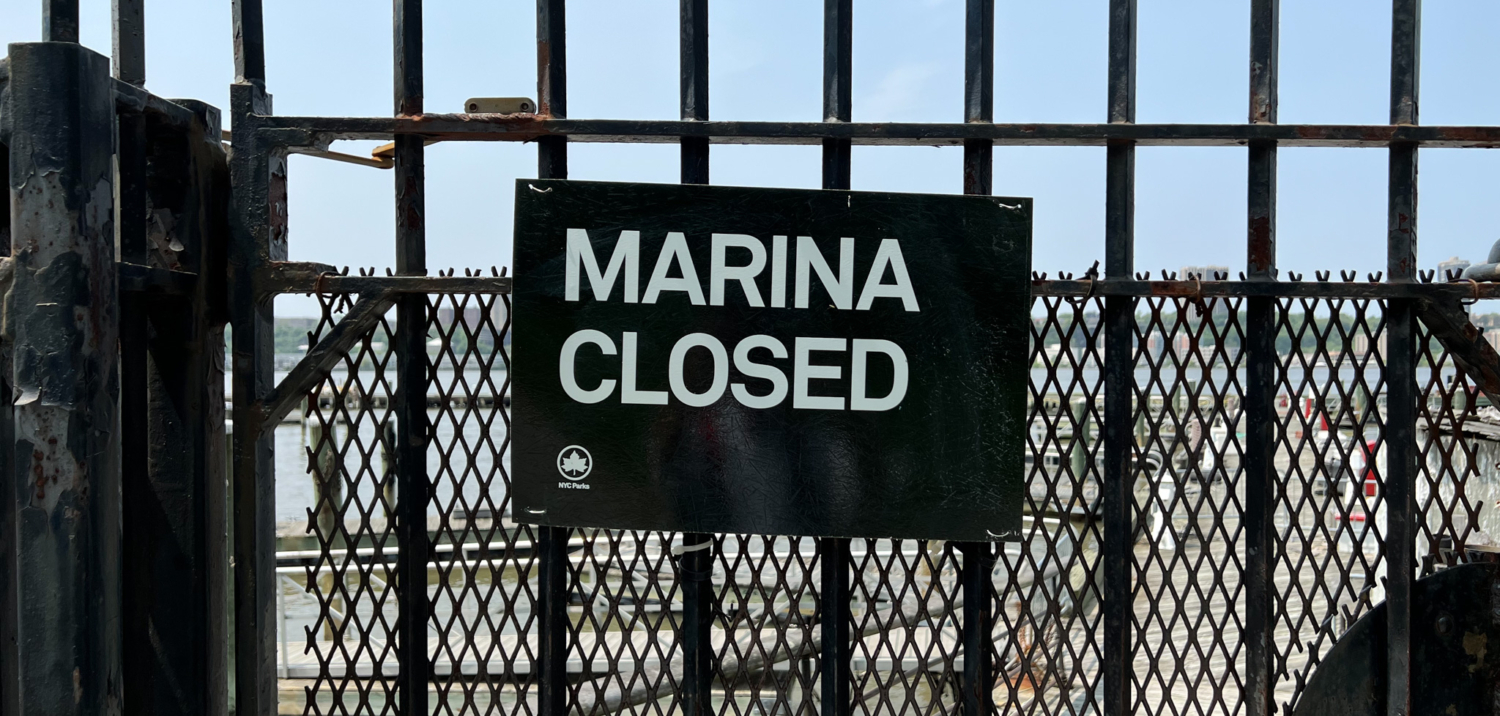
By Daniel Katzive
Riverside Park looks glorious in May. The cherry blossoms peaked in April, but the park now bursts in green. As the temperatures climb, sunbathers, bikers, and walkers come out in force. Scores of soccer players and little leaguers troop onto the park’s playing fields, and on the Hudson River, pleasure boats pass by, heading from their winter boatyards to summer marinas.
But none of those boats are stopping here.
The 79th Street Boat Basin Marina, heading into its second summer out of service, sits both derelict and charming in its decay – like something from a movie set, said Joe Gallagher, a local resident and movie producer who was busy working his phone near the marina on a recent weekday afternoon. “One of the beautiful things about the Upper West Side is, you really do feel like you’re walking in the movies and it’s like this imaginary world,” said Gallagher.
But tension is brewing below the Boat Basin’s surface. The marina’s 85-year-old docks – deemed unsafe and vacated in 2021 after years of flooding, ice damage, and mud accumulation on the river bed – await the wrecking ball at some unknown date. “We really extended the life of that as long as anyone could or would in their right mind do so,” said Nate Grove, head of marinas for the city’s Parks and Recreation Department (NYC Parks), at a Community Board 7 meeting back in November of that year. “We did what we could to maintain it, but at a certain point, for safety reasons, you just can’t keep rolling the dice like that.”
NYC Parks and the city’s Economic Development Corporation (EDC) want to rebuild the marina bigger and better than before, with room for more boats, access for larger vessels, and space for more public programming. The EDC’s web page boosting the endeavor promises: “When complete, the project will create new opportunities for boaters and the community of the Upper West Side.”
A marina has occupied this spot since the city created the park as we know it today in the 1930s under the leadership of urban planner Robert Moses. Damage from Hurricane Sandy in 2012 means the city can tap into about $30 million in federal funding to rebuild it ($30 million would cover roughly a third of the city’s projected cost). But there is a catch – a big one.
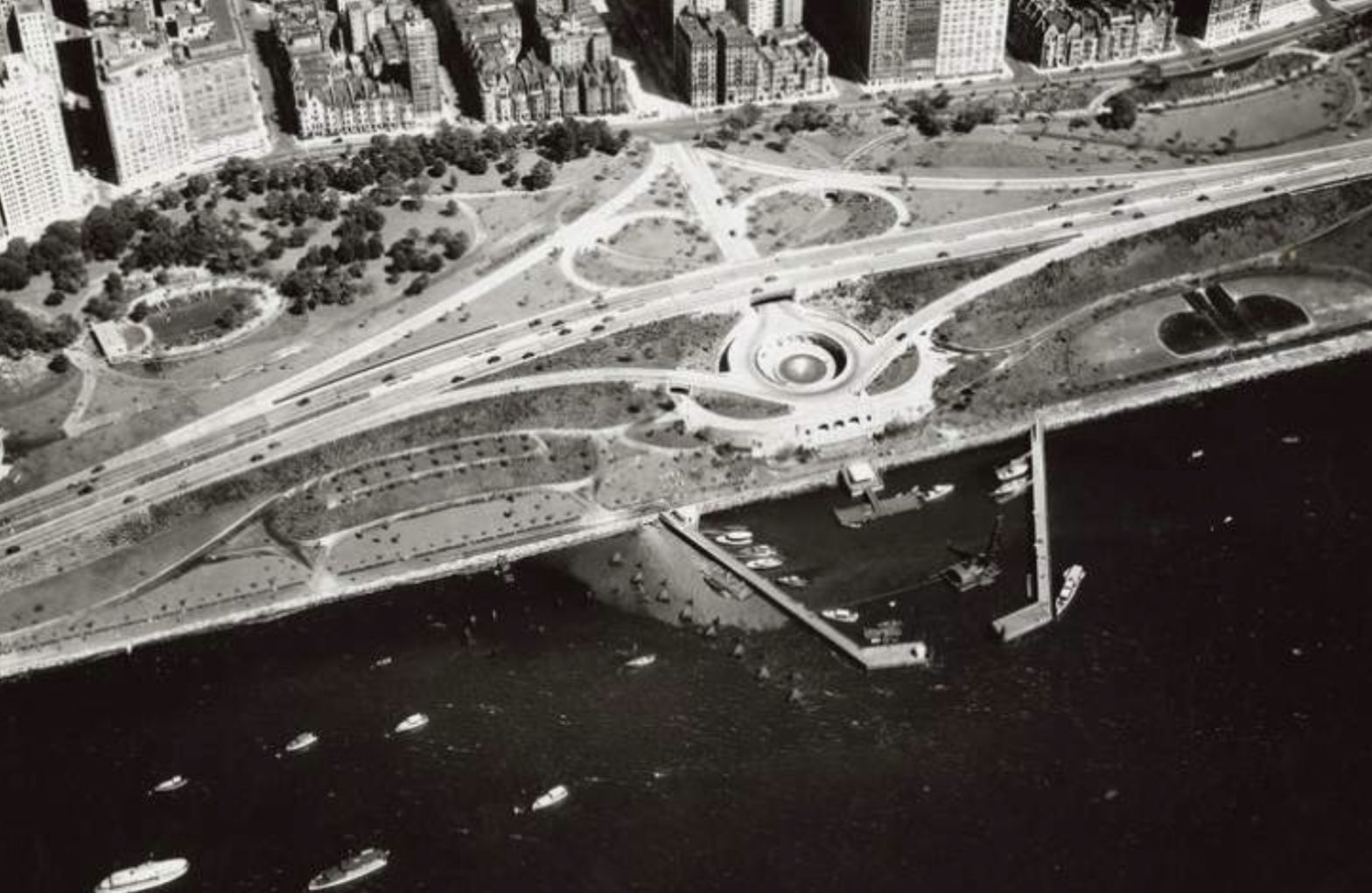
The Dock House Conundrum
A marina consists of a series of connected docks, but the docks have to be supervised, and a building is needed for that administrative work: for staff, security, a place to store Coast Guard-mandated records and customs documents for boats visiting from outside the US. And facilities are needed for the boaters who tie up at the docks. The current dock house, a ramshackle affair, has been cobbled together over the years and is hardly noticeable from the promenade which runs past. Heavily damaged by Hurricane Sandy, it needs to be rebuilt. And that’s where things get complicated.
A new dock house will have to comply with a host of rules and regulations which did not exist when the old one was built. Among them: flood sustainability rules require elevating the building on pilings; the building must have an elevator and ramps to meet standards in the Americans with Disabilities Act of 1990; Occupational Safety and Health Administration rules require adequate facilities for the staff who work there. “When you touch it, you have to bring it up to code,” Nate Grove, the Parks Department official, explained at a meeting last month of Community Board 7’s Parks and Environment Committee. ”We were grandfathered in, as it were, until you need to rebuild, and [then] you have to comply with these things.”
As part of the rebuilding, the city’s dock house plan also includes improved laundry and shower facilities for boaters, bringing the marina up to modern marina standards. “Nothing pains me more than reading the reviews of 79th Street Boat Basin in the cruising guides,” Grove told the committee. “They love the location, of course. They love being on the Upper West Side, they love access to Zabars, they love the customer service they get, they like the pricing. But the amenities are never what they expected from a marina located on the Upper West Side of Manhattan.” So rebuilding, Grove told the committee, would finally give the city “the opportunity to deliver amenities to the boating public who are using the facility.”
But all of those goals and requirements must be met in a building that also meets a New York State Department of Environmental Conservation mandate which restricts how much area the building can cover over the water. So in order to fit everything in, the city’s plans call for a two-story structure built on pilings and looming over the promenade below.
Stephen Frech, senior project manager from M&N Engineering, which is managing the project for the EDC, wrote to the CB 7 Parks and Environment Committee in early 2022 defending the large proposed structure. “The size of the Dockhouse [sic] balances the functional requirements for the marina staff to operate the marina safely and provide necessary space for marina users, while minimizing the overall footprint to the extent practical,” he said in the letter.
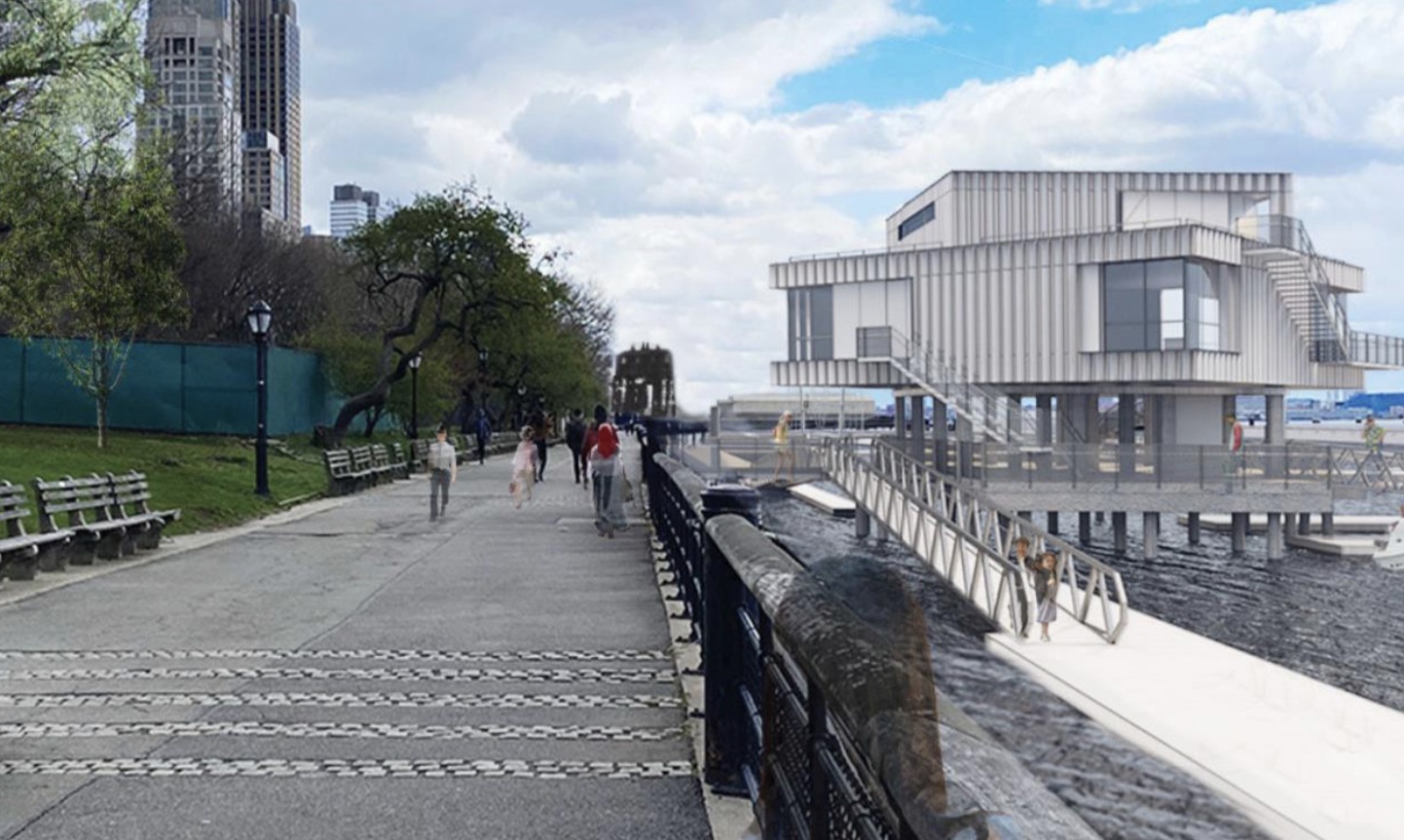
Community reaction has been, to put it, mildly, negative. In fact, “horrified” might not be too strong a word. Summarizing concerns in a letter to the EDC in November 2021, CB7 members wrote, “[Board] Members and community members expressed thoughts that the design was too large, bulky, clumsy, and opaque, and also inconsistent with the surrounding architectural and other features of Riverside Park.”
At a recent meeting where the EDC revealed revised plans for a taller but narrower building, board member Erana Stennett was even more blunt: “I don’t think this building is contextual, I don’t think it has any relationship to Riverside Park, to the water. It doesn’t fit.” Barbara Adler, also a CB7 board member, said “[I]n terms of the way it sits in our park, it’s an eyesore, and it will always be an eyesore as long as it’s any kind of giant structure like that.”
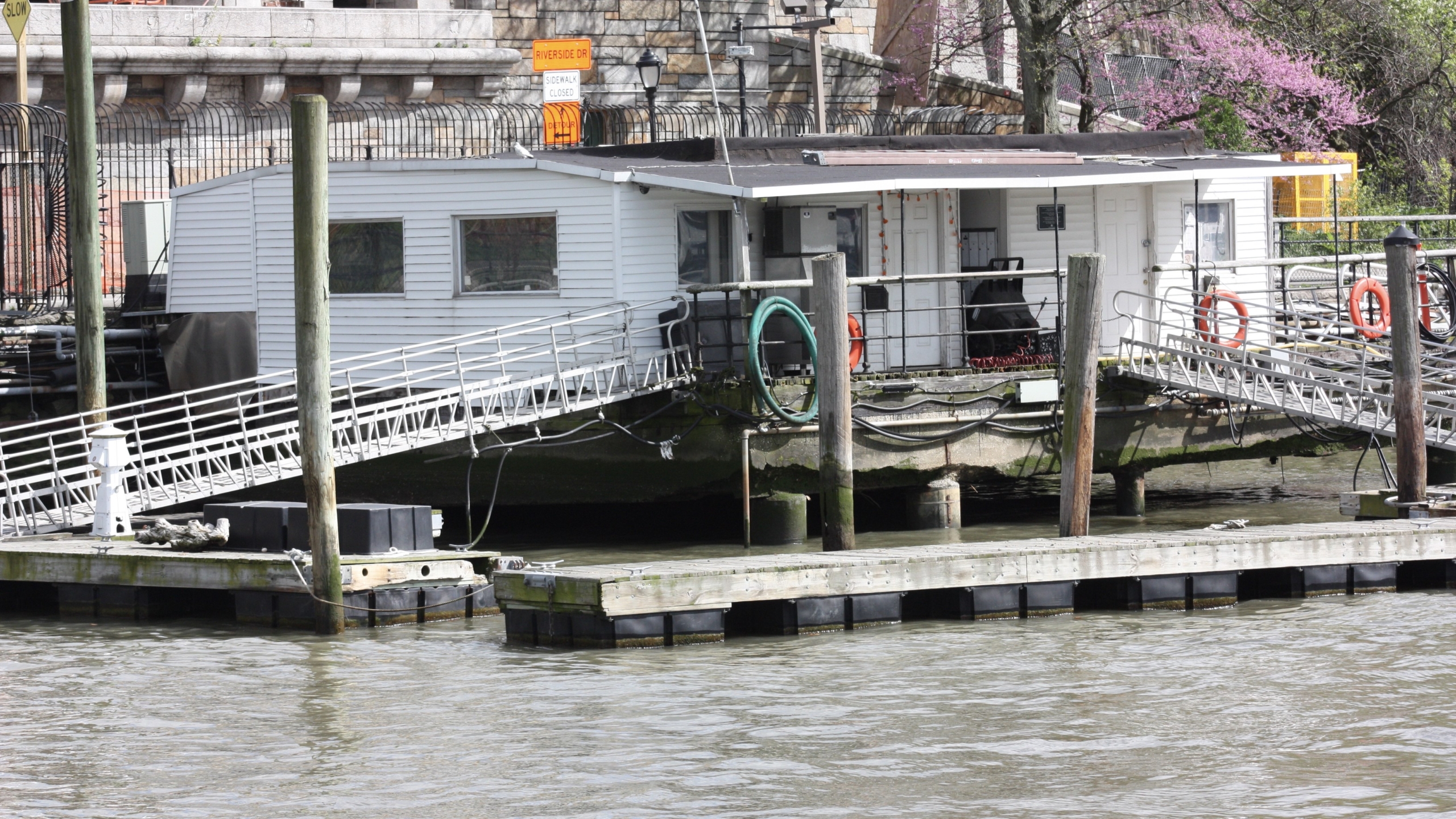
The Federal Emergency Management Administration (FEMA), which is providing the federal portion of the funding for the project, has also taken notice. In consultation with the New York State Historic Preservation Office, FEMA determined that the proposed two-story structure would trigger additional review requirements under the National Historic Preservation Act in order to qualify for federal money. In an April 17 letter the agency said the dock house “would obstruct clear views to the Hudson River from the Riverside Park and Drive Historic District and, therefore, would be an Adverse Effect to Historic Properties.”
Lost Access
Beyond the aesthetic criticism, some in the neighborhood have raised a more fundamental question: why rebuild the marina at all? “Why should the desires of a relatively small group of boaters be more important than the park experience of all the nearby apartment residents and all the visitors traveling the walkway?” asked Patricia Woodbridge in a March opinion piece in the Rag. “Why in this age when we are trying to mitigate climate change and continue our cleansing of the waters of the Hudson should we allow parking for gas-propelled boats?”
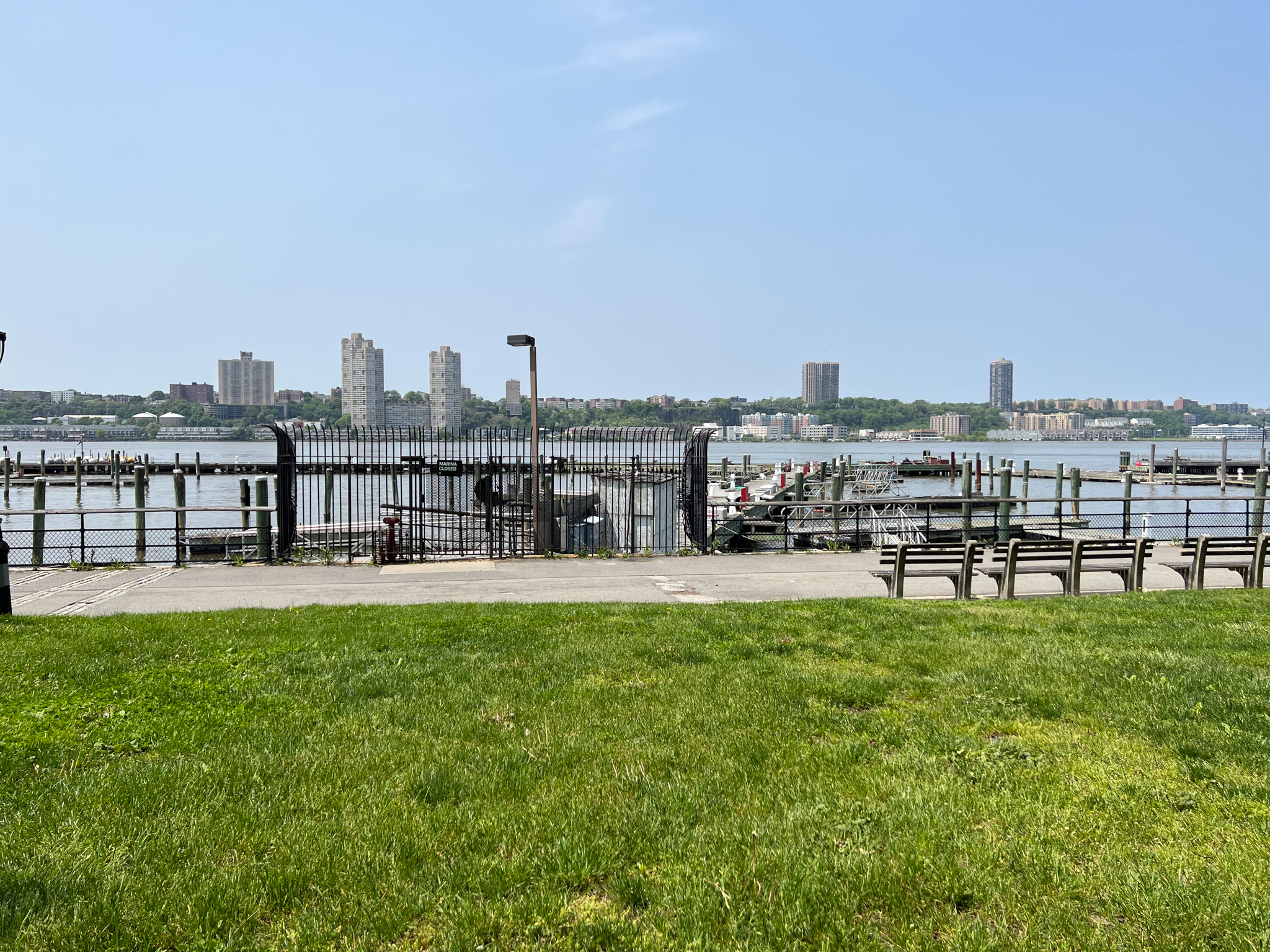
But many New Yorkers see the Hudson River as more than something pretty to admire from the shore. The Parks Department points out that the Boat Basin is one of only three public marinas in New York City. Responding to questions from WSR, a Parks Department spokesman wrote: “The site has served as New York City’s primary site for boating and marine education for 85 years, and connects thousands of New Yorkers, including students, boaters, and members of the public, to the waterfront each year.”
The old marina had a long waiting list for slips, but the prices at this public facility were much lower than at privately operated marinas like Chelsea Piers, and seasonal moorings were also available without a wait list. “Prior to closing, that was the only affordable place on the Hudson River to get in,” Community Board 7 member Kristen Berger said at a board meeting in May 2023. “It made a big difference for all sorts of boaters in trying to access the river.” But while Berger supports Boat Basin redevelopment, she is no fan of the current dock house design. “I found it just, frankly, pretty ugly,” she told the board.
Educational groups like the non-profit Hudson River Sloop Clearwater are eager to see the marina reopen. The organization, whose mission is to promote environmental stewardship on the Hudson, docked their 106-foot sloop at the Boat Basin for decades. The vessel, originally sponsored by folk artist and social activist Pete Seeger, has relocated off the Hudson to a marina in Brooklyn Bridge Park, using it as its New York City base now that 79th Street is closed.
Amali Knobloch, Communications Coordinator for Clearwater, said “79th Street was so perfect because it was really out of the way of most of the ferry traffic that’s crisscrossing the river. And so when we have students on board, it’s in the interest of the river being as calm as possible.” On the land side, she adds “school groups who were on the west side of Manhattan could walk, or who lived a couple of blocks inward, they could walk to the dock from their school.”
A sailing school has also been displaced by the closure. Atlantic Yachting had been operating a sailing school and youth summer camp out of the Boat Basin for 14 years. It now operates out of its Tribeca location at Pier 25. The company offers escorted travel to Tribeca from the West Side for its summer campers but has lost some families who don’t want to make the trip. Like Clearwater, the school also preferred the northern location because of lighter ferry traffic, making it more comfortable for youth instruction.
Logan Rowell, who owns Atlantic Yachting with his wife Caroline, said his camp was not just for well-off families. The company was able to meet applications to fully or partially cover camp tuition for all families who applied for scholarships. The company’s weekend basic keelboat certification class for adults that was held at the Boat Basin was also affordable, coming in at under $500 for twelve hours of instruction.
“Obviously it has negatively impacted our business,” said Rowell. “But I think the sadder thing is it’s just totally affected the ability for Upper West Siders to go sailing and Upper East Siders, or anybody uptown.” Rowell is eager to see the facility reopen. “The bottom line is the sooner it gets done, the sooner people are interacting with and recreating on the river again on the Upper West Side.”
Neither Atlantic Yachting nor the Clearwater team have taken a view on the particular design of the dock house itself. Rowell said his organization does not rely on much in terms of shore-side facilities; the school stores equipment on its boats. Clearwater’s Knobloch said the organization would like to have better laundry and showers for staff, but it does not take a position on the external design and the building’s impact on views from the shore. “You know, we live on the river so we can’t really speak to that,” said Knobloch.
Boat owners who have been displaced are eager to return to an improved facility with better protection from wakes and improved services. They have relocated their boats to marinas in Jersey City and Westchester, but miss the close-knit boat basin community and the ease of access that the 79th Street facility provided. Jan van der Lande, who has kept a boat there since 1985 with his wife Kazumi Hayama, occasionally staying aboard, said: “We know everybody on the boat basin. It’s almost like a little community there. We really miss it.” Their boat is now in Jersey City. Now, to access the water, said van der Lande, “we have to travel about almost sometimes two hours. It used to be one half hour to get to our boat. Before it was much better located.”
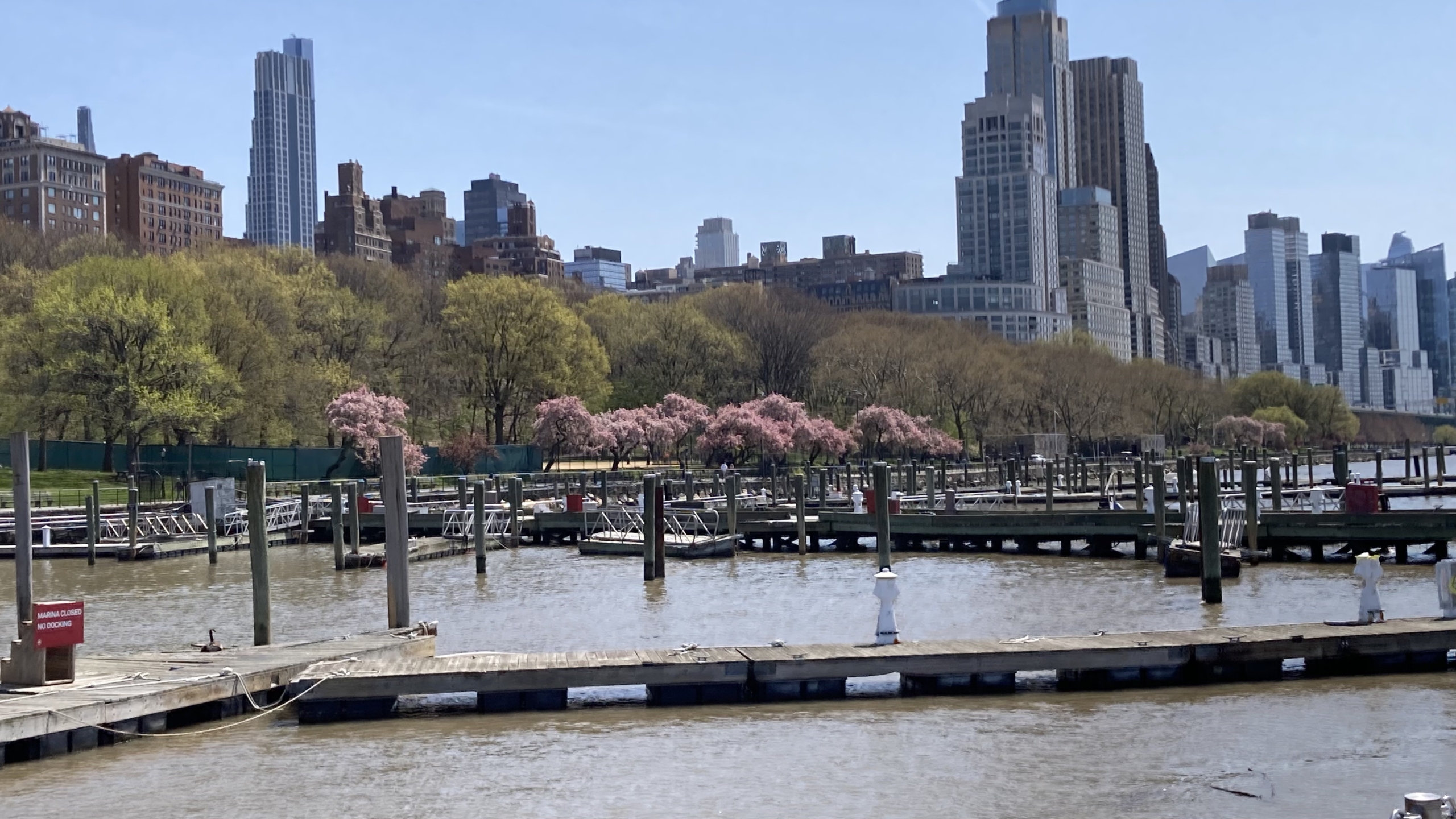
But even boat owners looking forward to coming back to the Boat Basin are not particularly enamored with the dock house plan. “I don’t understand what programming is driving a two-story giant building, when previously it was a shack,” said Laura Friedman, who called the proposed structure “sort of an abomination.” Her views were echoed by Jan van der Lande, who said, “I don’t know why it has to be such a monster dock house.” Jim Haddad, another boat owner who administers a Facebook group of former and presumably future Boat Basin users, told WSR, “No one I’ve talked to likes the design. They want it to be smaller and architecturally consistent with the area.”
Local residents enjoying the river view on a recent Thursday afternoon generally agreed the facility needs to be rebuilt but were not willing to endorse a large structure. “As a resident who’s been here for more than a decade, has seen the neighborhood evolve and grow and change, for me personally, at one point you just have to let it go and say that’s just the evolution of the city, of the neighborhood,”said Frank Graves, who was resting on a bench across from the proposed future site of the new dock house following a run. But, he added: “As long as it’s not, like, obnoxious, right? If they can keep things nice and discreet.”
“When you dock a boat, you don’t need it. It’s bull,” said Mike Mann, a theater worker out for a walk. Jerry, an 80-year old sitting on a nearby bench, who didn’t want to share his last name, added: “It should be something quaint. It should make people smile.”
Can the Parks Department and EDC come up with something that supports more programming, meets current codes, and still makes people smile? The approval process continues with FEMA currently reviewing the largely negative comments received from CB7 and members of the public. At the conclusion of its review, FEMA will communicate what mitigation measures will be needed to reduce the impact on views from historically significant areas.
The project then goes for review by the city’s Public Design Commission, which will solicit feedback from the Community Board as well, ensuring at least one more round of local debate. The Parks Department and EDC did not answer an inquiry from WSR on whether the original 2025 completion estimate was still achievable.
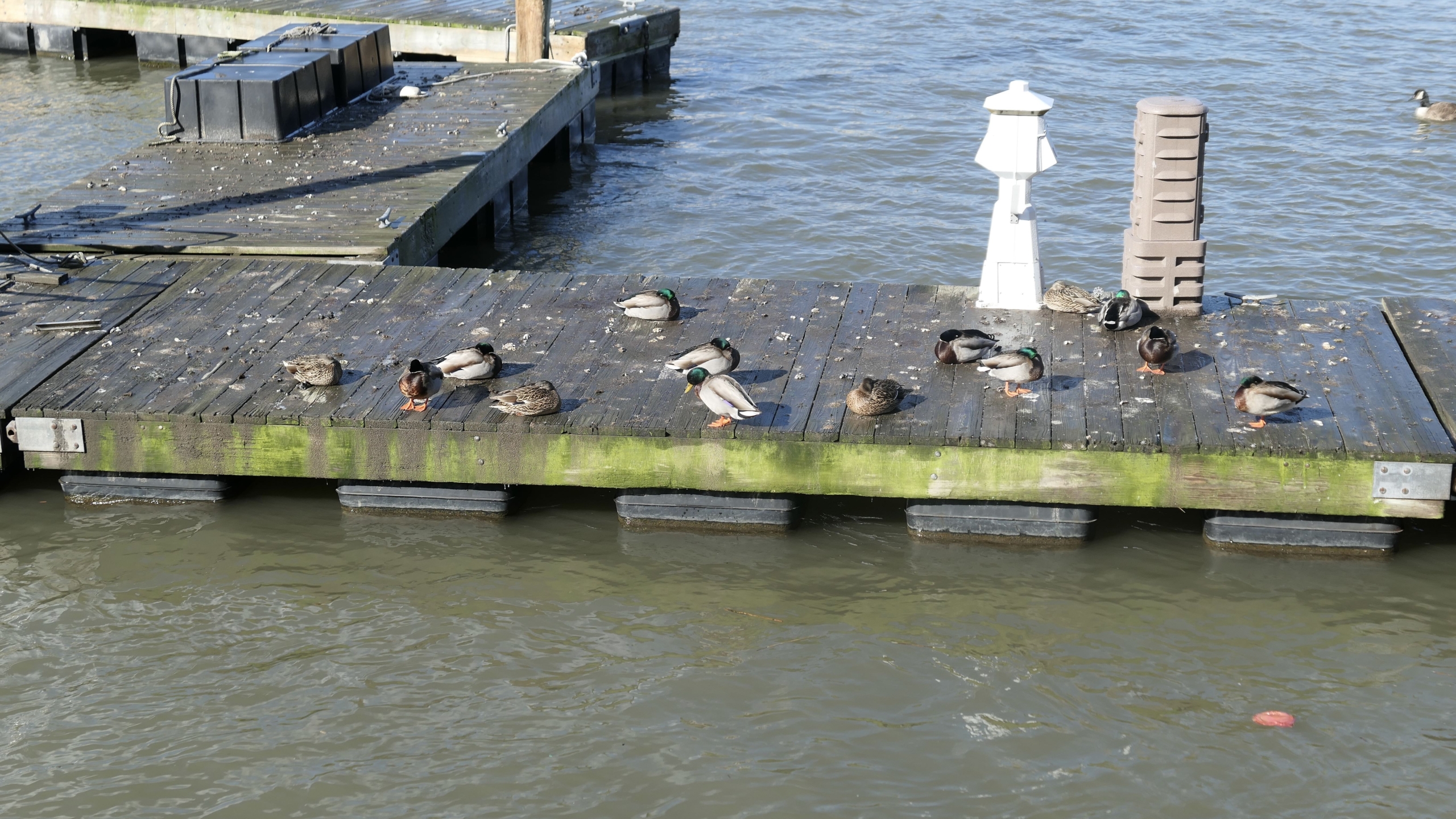
In the meantime, the decaying marina sits unrestored, as water laps over the mossy docks, and ducks and other waterfowl paddle around. The basin, home to your usual mallard couples, also has some less common looking fowl in residence which have lived here for years, perhaps domestic species released in the wild. They seem not to mind having the place to themselves.
Correction: The federal portion of the project would be $30 million, not $30 billion as we originally stated.



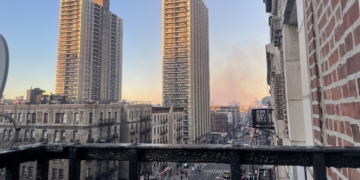





We need just water access, docks, places to walk and boat at 79th Street and w125th Street
I miss kayaking.
The smell of gasoline in a crowded marina would make me avoid the area completely. I guess no one else misses local kayaking:/
smell of gasoline?
what about the Henry Hudson Parkway ?
Do you smell gasoline from the tens of thousands of cars that pass by at all hours?
So why would you smell it from a relative handful of boats?
A busy marina smells worse than a busy gas station.
Excellent, comprehensive article that does a good job of allowing all stakeholders to express their views. I didn’t realize the Clearwater ran educational programs from the marina, or that a private company gave sailing lessons there.
However, neither use requires laundry or showers (the Clearwater director said they would like better showers, but it wasn’t clear if they actually needed them). And none of the educational uses requires turning a big swath of riverfront into a parking lot for private boats.
The boathouse may still need to be two stories to meet ADA and other requirements. And surely the design can look less like a stack of shipping containers.
But let’s end the private facilities for boat owners who live aboard their boats.
why shouldn’t boat owners be allowed to live on the UWS like the rest of us?
No one is saying they can’t. I live on the UWS and I hope to be able to obtain a slip and purchase a boat when the marina reopens. What they can’t do is take up a publicly-owned slip with a “boat” that’s neither seaworthy nor capable of moving under its own power. A significant number of the liveaboards lived on such craft. The number of available slips is (and will be) very limited, and their use as a permanent parking spot for an immobile floating apartment should not be permitted.
The presence of non-seaworthy and non-functioning liveaboards ended many years ago.
Why not move the whole thing up to the West Harlem Piers? That location already has the big Baylander ship/restaurant/bar, and it has immediately-adjacent street access. A boathouse would fit right in at that location, and I imagine it would be much more convenient for the boaters as well. I’ve often thought how inconvenient it must be for boaters to get from the current Boat Basin to any street-level UWS amenity.
Inconvenient? It’s maybe a two minute walk from the gate of the marina to 79th and Riverside. Add another four minutes to 79th and Broadway, and maybe 20 minutes door-to-door to Times Square. The only way to make it more convenient would be helicopter service from the dock.
Harlem Piers area also has a large unused transfer station that could converted to a marina.
Why don’t we push for ferry service here? An UWS ferry makes a ton of sense considering how great the NYC ferry service is doing on the East River. Currently the NYC Ferry on the hudson only goes up to Hudson Yards but this seems like a logical location to continue it!
This doesn’t strike me as a logical location for a ferry terminal at all. How many New Jersey residents commute to the UWS? How many UWS residents commute to the residential communities in NJ like West New York or Edgewater that are currently served by ferries? I’m sure a number of UWS residents commute to Jersey City, but for that commute, it’s certainly easier to take the PATH train than a ferry.
At one point the WSR published or linked to a diagram of the new designs proposed interior. My immediate thought was that it represented the culmination of regulations and mandates run amok. Between showers and laundry and restrooms and offices there was no surprise it was a behemoth. The shack has served well for decades but we’ve regulated our way out of something that reasonable.
Nice article. Thanks.
I have never been on a boat here nor do I plan to. But I am supportive of having the marina. Not everything has to be for my benefit as long as it isn’t too costly. I enjoy walking by and looking at the boats and they seem to give people a lot of pleasure.
I don’t understand why the building has to be so big. We don’t need “programming.” As the old saying goes, Keep It Simple Stupid. Have as little as possible in the building that is on the water. They are currently reconstructing the area where the restaurant was – allocate some space there for whatever other functions are necessary. Not that hard.
I’d be inclined to agree but $90 million seems like it might be too costly.
I tend to agree though note that there will be some return on this investment as they do charge fees. I assume the fees likely largely just cover ongoing costs but there might be some small secondary benefit.
And how much of the $90 million for this ridiculous oversized building vs. for the actual marina? By cutting the costs of the building that nobody wants, that could solve much of the problem.
Makes sense to put offices in the 79th St. rotunda complex, but you underestimate NYC gov turf battles. I believe DOT has control over the rotunda renovation; marina project is Parks and EDC.
The exterior of the Peter J. Sharp Boathouse on the Harlem River is attractive
I say just build it already. I miss seeing sailboats on the river. It made the neighborhood a more interesting place. The park will still be beautiful. Flowers will still bloom. The design itself is kind of funny looking, but so was Lincoln Center when it first appeared. Sure it’s bigger than the old one, but it’s just one building next to a park that’s 65 blocks long. The only people who will even see it are joggers and little leaguers playing on the baseball field. I vote yes.
For those UWSers not privileged to own a houseboat, why not used one of the proposed boat basin docks for ferry service to the Upper West Side by NY Waterway…with connections to midtown and the South Street Seaport? You’d be allowing UWS residents to participate in NYC’s greatly improved water transport access…which is non-existent for us. Especially for Seniors…who can’t easily navigated the subways any longer, but would relish the liberating water travel experience!
The Boat Basin garage has a huge space. It can accommodate showers, laundry, office and anything more. If used, the dock building can be far smaller. The “inconvenience” is going out the gate and in a door, and avoiding all the bicycles speeding past.
For the $’s under discussion you could easily build a tunnel that passes under. And this would also allow all the dock hookups (electric, water, etc) to be run without ugly pipes over the water as before.
How’s this for an idea? Refit a barge–long and flat, like the sloops that are floating restaurants on the Hudson in Chelsea. They won’t have to be on towering poles and stick up as high.
We need a boat basin in the Hudson. The present location is perfect. Let’s stop the politics and rebuild it.
Good article which reflects many different perspectives. One can only regret that news sources such as the New York Times no longer do that and instead reflect their editorial views in the way their news articles are presented.
And too bad when one of the CB7 members voices a view based on her narrow perspective. Since she has no boat then why have a bathhouse or marina? Sounds like the views we heard a year or two ago that since she has no car why allow street parking at all? Narrow or self interested people do not belong on our community boards. And I say this as a person with no interest in the Marina nor as someone who parks on the street.
Do these CB7 members sit in their apartment all day all week doing nothing but staring out of their window at the river? Seems so.
Will they next attack the sightseeing ships that now disturb their precious view? How boring.
The cost seems excessive
. $30 Billion plus is crazy.
How much do the charge to dock a Boat?
I think they meant $30 million Federal for a total of $90 cost.
Great article, learned a lot.
I love sailing, but wouldn’t want to push my relatively niche hobby on the neighborhood. Could be cool if done well, but maybe another type of water access (simply docks to lounge on?) would be more appreciated and less fraught with hassle.
Putting most of the structure under ground, on the shore, with a restaurant and other community oriented facilities above ground would minimize its visual impact and allow for the space that is required for administrative stuff.
You missed the part about more restrictive building regulations after Hurricane Sandy. Structures and facilities need to be elevated not put underground.
Instead of a dock house that needs to pass extensive/expensive hurdles like height because of flood sustainability etc, a simple solution would be to have no “fixed” dock house at all but instead an appropriate sized dock house on a floating barge.
How would you make that ADA-compliant with changing tides?
What is needed is an adequate, modest, park-appropriate boat house (presumably a rather unassuming one could be both attractive and reasonable in cost). Not the corporate-glitzy thing that is proposed, which is too, too much like too, too many newer buildings in New York.
If they cannot have a section of the redevelopment of the rotunda, they can utilize the area where the stand-alone public toilets, a little bit further down. Connect them as one building. Put showers and build a second floor for conference, classes, etc. Of course, keeping the pedestrian lane and the view clear. Just build a solid small and lower dock by the water for monitoring the docks.
The perfect scenario, of course, would be keeping it all at the rotunda – all in one place. We do not need to redo the fountain. Put a glass dome instead and light it at night, even if it offices underneath.
The design for the so called boat house is beyond offensive. It interferes with the view of the river and adds nothing to the area but a place that will no doubt end up being used for paid events. A one story facility that compliments the boat basin seems more appropriate but we can’t have that cause someone wants more. Do they care that it destroys the sense of place…of course not.
Look at the design…they didn’t even try to make it attractive. It’s like they want to pretend it is left over from some imagined industrial ruin. No grace, no style, not beautify….just big money spend without any sympathy for the natural beauty of the site. That’s NYC …sad but there it is.
Why not a floating dock house?
We Basin Boaters believe the Parks-proposed multi-story dock house will not only have an adverse effect on the surroundings but also an adverse effect on users of the park, the future Boat Basin boaters and users, the Basin staff, the construction time and the cost.
Objectives
A dock house should provide optimal solutions in the following areas:
• Viability
• Feasibility
• Ambiance
• Location
• Cost
• Function
• Floodplain resiliency
• Design
An alternative with less adverse effect
Viability
We boaters believe that the multiple story dock house is not viable. Multiple parties are against the land-based structure’s multiple stories and NYS is against a land-based one-story structure. FEMA will receive negative feedback supporting the position that the structure does have an adverse effect. Instead, we boaters are proposing a viable alternative – a floating one-story dock house.
Feasibility
We have proposed a floating dock house during the design process. Parks believes it’s not feasible because the floating dock house would have to be inspected by the Coast Guard, repairs would be more difficult, etc. However, there are multiple floating structures in NY Harbor:
• Floating restaurant barge at 26th Street on the Hudson
• World Financial Center ferry terminal
• Waterfront Museum and Showboat barge in Brooklyn
• Liberty Landing Marina dock office on a lightship
• Liberty Landing ferry dock at Liberty Landing Marina
• Liberty Landing Marine Services shop and office
• Statue Line vessel at Liberty Landing Marine Services
Above mentioned vessels survived Superstorm Sandy with little impact on their operation. They may have remained in place for at least a decade. There are also hundreds of commercial structures and floating homes across the country, e.g., Sausalito and Seattle.
Ambiance
A floating dock house would have the least adverse impact on the neighboring park and esplanade. The one-story roof line should be below the present dock house height during most tidal heights and present minimal viewshed problems. The massive pilings structure of the multiple story dock house would be replaced by a floating dock house with spud pilings like the pilings throughout the future marina.
Location
A floating dock house can be positioned anywhere along the esplanade. The current dock house location would be optimal. Supplies and repairs equipment could be in the rotunda garage as they are now. Utilities could be routed through the rotunda garage. People accessing the dock office can approach through the rotunda with the least impact on the esplanade traffic of walkers, sitters, baby carriages and skaters. A camera surveillance system could provide the staff with full views of the Basin docks.
Cost
The cost of the one-story floating dock house should be less than the cost of building the multiple stories dock house. Cost savings should be realized through the elimination of the ADA elevators since access should be by ramp to a one-story floating dock house. Less space should be required by shifting maintenance areas into the garage. Some public programs could use rotunda space as the sailing school has in the past.
The floating dock house could be built elsewhere and towed to the Basin. It should shorten construction time and cost.
Any reduction in cost should make more funds available to increase the number of slips. The current plan for the $90 million is to add 39 slips to the current 116 for a total of 155 slips. The last 36 slips are planned for a later phase. Does anyone think that the next phase would start within the next decade? There is a waitlist of over 1000 with estimated 15 year wait.
Function
Ease of use by the boaters, staff and public. Instead of ADA elevators and 115 Steps between levels of the multiple story structure and the docks, the boarding ramp of the floating structure should provide better and safer access.
Floodplain resiliency
Floodplain requirements of a one-story floating dock house are minimal. The structure should rise with storm surges on its pilings and settle back down as the tide levels decrease.
Design
Floodplain requirements of a multiple story structure require the first story to be unusable. It should be easier to design a one-story floating structure. Opacity concerns, set back from the esplanade, reduction in floor space, reduction in storage space, safer access all favor a floating dock house.
Summary
We propose an alternative of a floating dock house that should provide a better dock house for the future Boat Basin.
Well stated. Hard to argue with that. Thank you.
Anyone ever see the Peter J. Sharp Boathouse off the Harlem River Drive? It’s beautiful. Tried to post a picture here but couldn’t. Check the website for Row NYC.
Good point. It’s so much better than the proposed eyesore.
Why can’t they build one floor under water level? I don’t understand the need for showers but if they exist, they should be available for users of free Kayaks! Otherwise, it’s like the Titanic, if you get my meaning. And please, no ferries! The gasoline smell and the noise would be such an insult to people who want to enjoy the local relaxing atmosphere!
Could someone clarify. The article states the projected cost at 90 BILLION yet comments are saying 90 Million is too much.
Is it 90 Billion or 90 Million?
Thank you, article corrected FEMA contribution is $30 million, roughly 1/3 of the cost
As it happens, I have about 10 photos of the basin just as Sandy was arriving. I’d be happy to share these with WSR for the article if of interest.
I would love to see those photos published. I grew up on the UWS and always have loved the Boat Basin (though we were far from being able to afford a boat! We couldn’t have afforded so much as a canoe, in fact). Still, as a child, I would watch the boats docked there and dream of one day being able to ride on one of them. And I knew the old Dock House had a soda machine that was much cheaper than buying from the pushcart vendors, so I always just walked down the ramp and bought from it whenever I wanted. No one ever challenged me. 🙂
That proposed dock house is an abomination and I will be one of the many locals who will oppose it no end. There is NO need for it to be 2 stories, first of all! And if they require more bathroom facilities, they can use what’s at the Rotunda, all of a one or two minute walk from where the old dock house currently sits.
Funny how every other developed country across the world solves these things in no time.
I shall repeat myself for roughly the sixth time – but the 102nd st & Riverside Park soccer field/running track overhaul is Exhibit A for how dysfunctional NYC bureaucracy is.
Start, then stop, work – indefinitely.
How is it possible that there is NO ONE in our local gubberment to accelerate an answer – any answer! – to the Boat Basin Blow-Off ?!?!?
“Why should the desires of a relatively small group of boaters be more important than the park experience of all the nearby apartment residents and all the visitors traveling the walkway?” asked Patricia Woodbridge
This is how most NYers feel about bike cultists
A niche hobby The DOT, CB7 and city council are obsessed with
We need to broaden this discussion to include the effects of the coastal storm project now being considered. One plan that would avoid 63% of coastal flooding involves the construction of 12 to 20 foot permanent walls along certain waterways (including portions of the Hudson River): https://www.nytimes.com/interactive/2023/06/15/opinion/nyc-flood-waterfront-plan.html?campaign_id=39&emc=edit_ty_20230615&instance_id=95107&nl=opinion-today®i_id=88672879&segment_id=135636&te=1&user_id=d9f5dd4af224a51bec85371f86d5a163. According to the maps shown in the article, the wall-based plan would not prevent coastal flooding north of about 42nd Street. Other plans being considered are storm surge barriers of various sizes, which would avoid most of the walling, and avoid coastal flooding by 96% or 87%, depending on the plan.